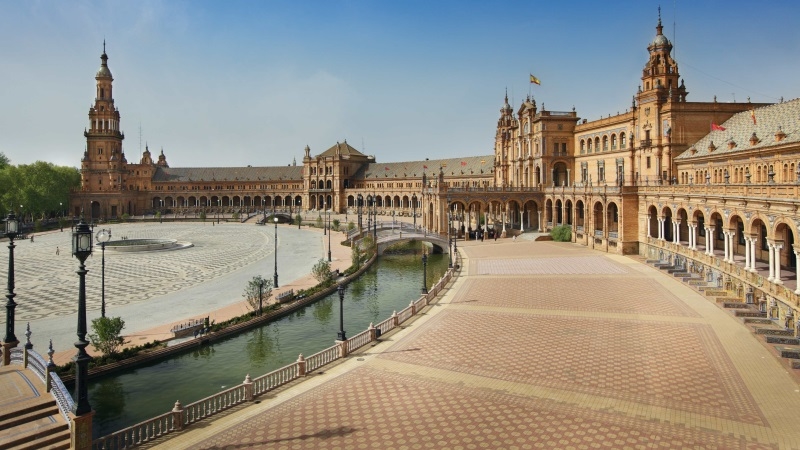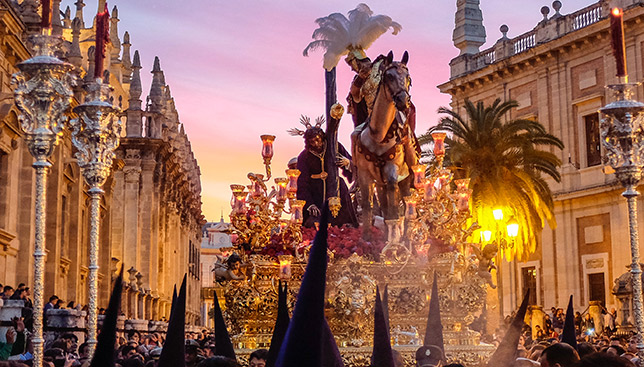
According to legend, Seville was founded by Hercules and its origins are related to the Tartessian civilization. His name was Hispalis under the Romans and Isbiliya with the Moors. The highlight of its history was the discovery of America in 1492. For all its important monuments and fascinating history, Seville is known worldwide for being a joyful city. If Sevillians are known for their spirit and brilliance, the city itself is striking for its vitality. It is the largest city in southern Spain, the city of Carmen, Don Juan and Figaro.

Seville, located on the banks of the Guadalquivir and one of the largest historical centers in Europe, has the minaret of La Giralda, the cathedral (one of the largest in Christendom) and the Alcazar Palace. Part of its treasury includes the Casa de Pilatos, the Torre del Oro, the Town Hall, the archives of India (where are preserved the historical documents of the American continent), the museum of the Beaux-Arts (the second largest gallery of images of Spain) and convents. , churches and parish palaces.
It hosted two international exhibitions (1929 and 1992) and is the administrative capital of Andalusia. The Triana neighborhood on the other side of the river, La Macarena, Santa Cruz and San Bartolomé, Las Sierpes Street, La Maestranza bullring, María Luisa Park and the riverside walks are representative images from Seville.
The Sevillians are great actors and make an extraordinary performance at their annual Feria de Abril, a week-long celebration of drink, food and dance that takes place day and night in more than a thousand specially built tents. But above all, it allows men to parade on their beautiful horses and women to dance in colorful gypsy dresses. Immediately before, Holy Week, Semana Santa, a religious festival where hooded penitents parade. In long processions followed by enormous baroque floats on which rest images of the Virgin or Christ, surrounded by joyful crowds. Both spring events are worth living.

In Seville, you will want to visit the old town, with in its heart the cathedral and the Giralda tower. (You can climb the steps inside the tower to have a wonderful view of the city). Nearby are the Mudejar Royal Palace known as Alcazar with its wonderful gardens and the Santa Cruz district, with its narrow streets, flowered balconies, richly decorated facades, hidden patios … Do not miss also Casa de Pilatos, a grand 16th century mansion where the Mudejar, Gothic and Renaissance styles mingle harmoniously amidst exuberant courtyards and gardens and, crossing the Triana Bridge on the great Guadalquívir River, the district Popular Santa Ana Triana and traditional ceramic plants.
You will also be surprised by the enormous natural wealth of a region straddling two continents, which contains treasures like the Doñana Natural Park, declared World Heritage Site and declared a Biosphere Reserve by UNESCO, or the Sierra Norte Natural Park where you can practice all types of outdoor sports, including hiking, horse riding and cycling. But if you prefer golf, Seville has four excellent courses in its surroundings.